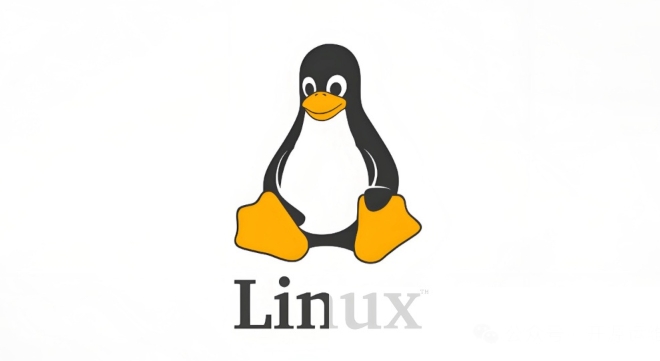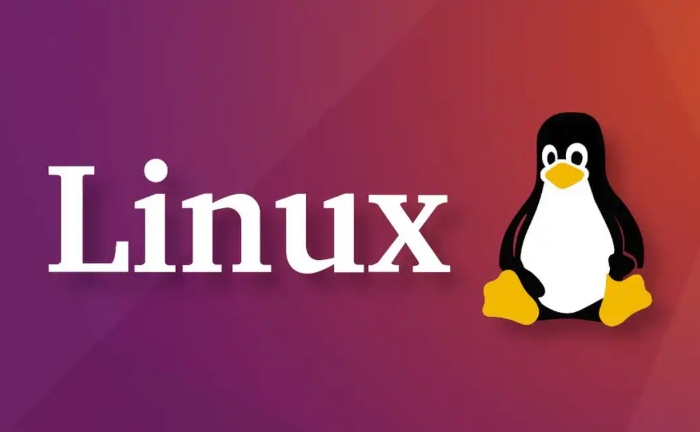What are the basic Linux commands every beginner must know?
Jul 15, 2025 am 01:40 AMMastering the basic Linux commands can speed up the use of the process, mainly including four categories: file and directory operations, viewing and editing file content, system information and process management, and permissions and users related. 1. File and directory operation commands include ls to view the directory contents, cd to switch the directory, pwd to display the current path, mkdir to create the directory, rm/rmdir to delete the file or directory, cp/mv to copy and move or rename the file. 2. To view and edit file content, you can use cat to output small file content, less pagination to view large files, head/tail to view the beginning or end of the file, nano/vim to edit the file, and echo to write strings to the file. 3. The system information and process management commands have top/htop to view resources, ps to find the process, kill/killall to end the process, df/du to view disk space, and free to view memory usage. 4. Permissions related to user commands such as chmod modify permissions, chown changes the user group to which it belongs, su/sudo switches the user, and whoami/id checks user information. Beginners can check while using it and gradually become familiar with these commonly used commands.

When you are new to Linux, mastering some basic commands can help you get started faster. These commands can not only help you check the system status, but also complete daily file operations and permission management.

File and directory operations: the most commonly used basic commands
This part of the command is used every day, especially when you troubleshoot problems on the server or deploy applications.

-
ls: List the directory contents, add the-lparameter to see detailed information (such as permissions, size, modification time, etc.). -
cd: Switch the directory, such ascd /home/userto enter the specified path. -
pwd: Shows the full path to the current directory. -
mkdir: Create a new directory, add-pto create multi-layer directories recursively. -
rmandrmdir: delete files or empty directories,rm -rcan recursively delete non-empty directories. -
cpandmv: copy and move files,mvcan also be used to rename them.
It is recommended that beginners be familiar with the basic usage of these commands first, and then gradually try operations with parameters.
Viewing and editing file content: Several practical methods
Sometimes you need to quickly view the contents of a file, or make simple edits. Here are some common ways:

-
cat: output file content to the terminal, suitable for small files. -
less: View content on pages, suitable for large files, pressqto exit. -
headandtail: View the beginning and end of the file respectively, and display 10 lines by default. -
nanoorvim: These two are commonly used text editors. It is easier to get started withnano,vimis more powerful but has a steep learning curve. -
echo: You can write strings to a file, such asecho "hello" > file.txt.
Note: It is best to back up a copy of the original file before editing the configuration file to avoid misoperation caused by service exceptions.
System information and process management: Understand the running status
When you want to see how the machine runs, or if a program gets stuck, these commands come in handy:
-
toporhtop: Check the system resource usage in real time,htopis more intuitive. -
ps: Check the currently running process, and it works better withgrep, such asps aux | grep nginx. -
killandkillall: end the process,kill PIDis to send a termination signal,kill -9 PIDis to force termination. -
dfanddu: View disk space,df -hdisplay is easier to read. -
free: Check memory usage, add-hparameter to better readability.
If you are operating on a remote server, remember not to kill the system key processes casually.
Permissions are related to users: secure operations cannot be ignored
Linux's permission mechanism is relatively strict, and understanding basic permission settings can avoid many problems:
-
chmod: Modify file permissions, such aschmod 755 script.shis set to executable. -
chown: Modify the user and group to which the file belongs, such aschown user:group file.txt. -
suandsudo: Switch users or temporarily execute commands as administrators. -
whoamiandid: View current user information.
Unreasonable permission settings may cause the script to be unable to run or the website to be accessed, so remember to test whether the function is normal after modifying the permissions.
Basically that's it. When you first learn, you don’t need to remember them all. Use them while checking them. After you become proficient, you will find that these commands are actually not complicated, but very practical.
The above is the detailed content of What are the basic Linux commands every beginner must know?. For more information, please follow other related articles on the PHP Chinese website!

Hot AI Tools

Undress AI Tool
Undress images for free

Undresser.AI Undress
AI-powered app for creating realistic nude photos

AI Clothes Remover
Online AI tool for removing clothes from photos.

Clothoff.io
AI clothes remover

Video Face Swap
Swap faces in any video effortlessly with our completely free AI face swap tool!

Hot Article

Hot Tools

Notepad++7.3.1
Easy-to-use and free code editor

SublimeText3 Chinese version
Chinese version, very easy to use

Zend Studio 13.0.1
Powerful PHP integrated development environment

Dreamweaver CS6
Visual web development tools

SublimeText3 Mac version
God-level code editing software (SublimeText3)

Hot Topics
 Install LXC (Linux Containers) in RHEL, Rocky & AlmaLinux
Jul 05, 2025 am 09:25 AM
Install LXC (Linux Containers) in RHEL, Rocky & AlmaLinux
Jul 05, 2025 am 09:25 AM
LXD is described as the next-generation container and virtual machine manager that offers an immersive for Linux systems running inside containers or as virtual machines. It provides images for an inordinate number of Linux distributions with support
 How to create a self-signed SSL certificate using OpenSSL?
Jul 03, 2025 am 12:30 AM
How to create a self-signed SSL certificate using OpenSSL?
Jul 03, 2025 am 12:30 AM
The key steps for creating a self-signed SSL certificate are as follows: 1. Generate the private key, use the command opensslgenrsa-outselfsigned.key2048 to generate a 2048-bit RSA private key file, optional parameter -aes256 to achieve password protection; 2. Create a certificate request (CSR), run opensslreq-new-keyselfsigned.key-outselfsigned.csr and fill in the relevant information, especially the "CommonName" field; 3. Generate the certificate by self-signed, and use opensslx509-req-days365-inselfsigned.csr-signk
 7 Ways to Speed Up Firefox Browser in Linux Desktop
Jul 04, 2025 am 09:18 AM
7 Ways to Speed Up Firefox Browser in Linux Desktop
Jul 04, 2025 am 09:18 AM
Firefox browser is the default browser for most modern Linux distributions such as Ubuntu, Mint, and Fedora. Initially, its performance might be impressive, however, with the passage of time, you might notice that your browser is not as fast and resp
 How to troubleshoot DNS issues on a Linux machine?
Jul 07, 2025 am 12:35 AM
How to troubleshoot DNS issues on a Linux machine?
Jul 07, 2025 am 12:35 AM
When encountering DNS problems, first check the /etc/resolv.conf file to see if the correct nameserver is configured; secondly, you can manually add public DNS such as 8.8.8.8 for testing; then use nslookup and dig commands to verify whether DNS resolution is normal. If these tools are not installed, you can first install the dnsutils or bind-utils package; then check the systemd-resolved service status and configuration file /etc/systemd/resolved.conf, and set DNS and FallbackDNS as needed and restart the service; finally check the network interface status and firewall rules, confirm that port 53 is not
 How would you debug a server that is slow or has high memory usage?
Jul 06, 2025 am 12:02 AM
How would you debug a server that is slow or has high memory usage?
Jul 06, 2025 am 12:02 AM
If you find that the server is running slowly or the memory usage is too high, you should check the cause before operating. First, you need to check the system resource usage, use top, htop, free-h, iostat, ss-antp and other commands to check CPU, memory, disk I/O and network connections; secondly, analyze specific process problems, and track the behavior of high-occupancy processes through tools such as ps, jstack, strace; then check logs and monitoring data, view OOM records, exception requests, slow queries and other clues; finally, targeted processing is carried out based on common reasons such as memory leaks, connection pool exhaustion, cache failure storms, and timing task conflicts, optimize code logic, set up a timeout retry mechanism, add current limit fuses, and regularly pressure measurement and evaluation resources.
 Install Guacamole for Remote Linux/Windows Access in Ubuntu
Jul 08, 2025 am 09:58 AM
Install Guacamole for Remote Linux/Windows Access in Ubuntu
Jul 08, 2025 am 09:58 AM
As a system administrator, you may find yourself (today or in the future) working in an environment where Windows and Linux coexist. It is no secret that some big companies prefer (or have to) run some of their production services in Windows boxes an
 How to Burn CD/DVD in Linux Using Brasero
Jul 05, 2025 am 09:26 AM
How to Burn CD/DVD in Linux Using Brasero
Jul 05, 2025 am 09:26 AM
Frankly speaking, I cannot recall the last time I used a PC with a CD/DVD drive. This is thanks to the ever-evolving tech industry which has seen optical disks replaced by USB drives and other smaller and compact storage media that offer more storage
![Installation and Review of Q4OS Linux [Lightweight Distro]](https://img.php.cn/upload/article/001/242/473/175150507396452.jpg?x-oss-process=image/resize,m_fill,h_207,w_330) Installation and Review of Q4OS Linux [Lightweight Distro]
Jul 03, 2025 am 09:11 AM
Installation and Review of Q4OS Linux [Lightweight Distro]
Jul 03, 2025 am 09:11 AM
Q4OS is a new Linux distribution that’s based on Debian; a common base that’s shared with other distributions like Ubuntu and Linux Mint. It’s aimed at users who just want a simple, stable, easy to use Linux operating system that they can convenientl






